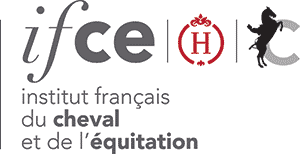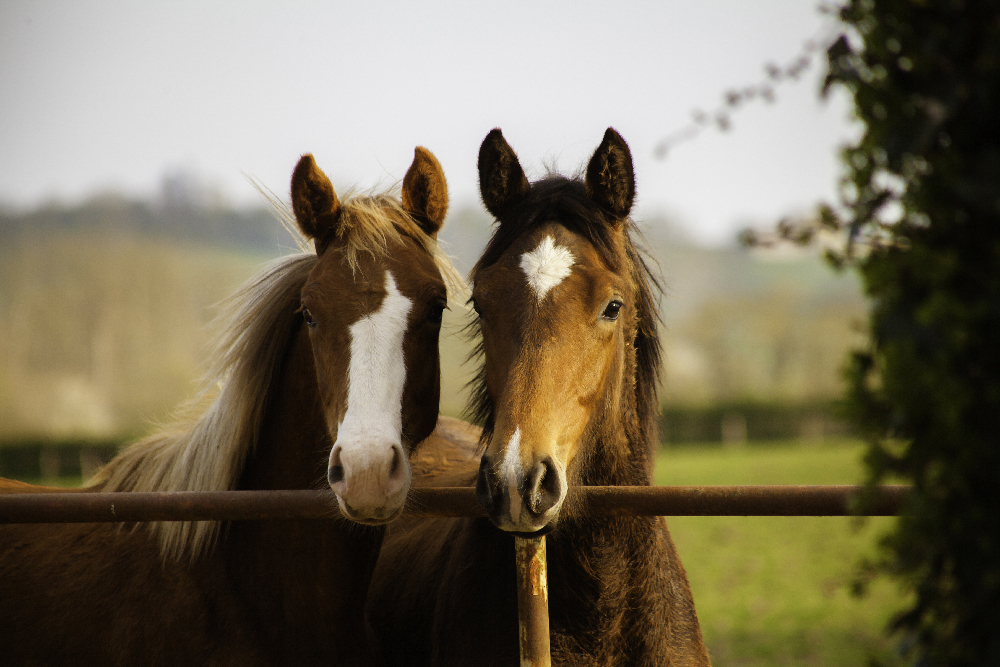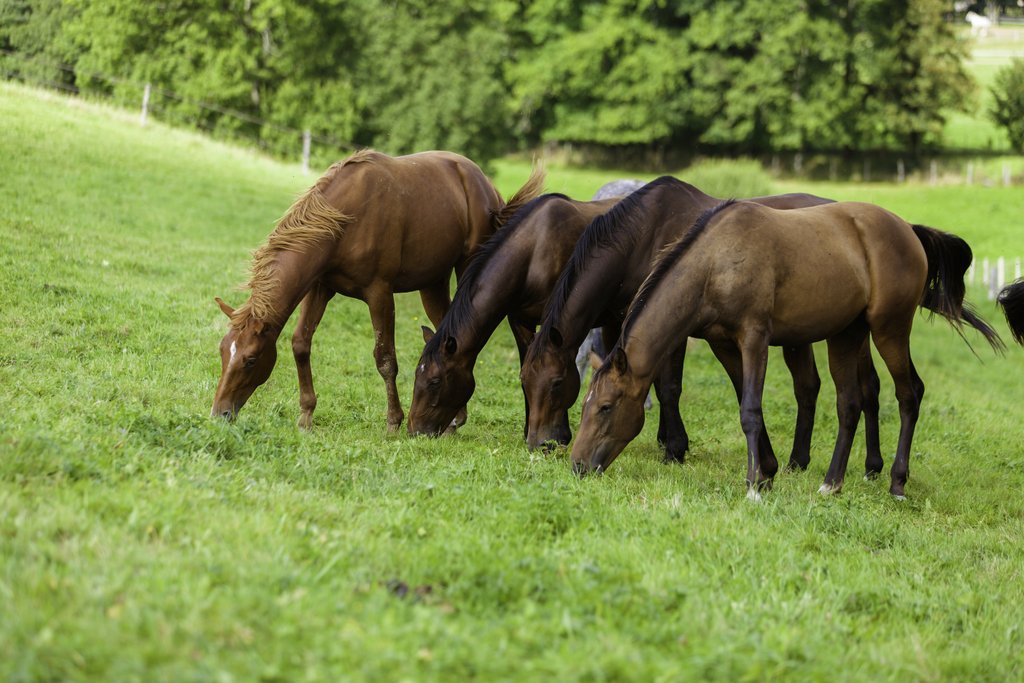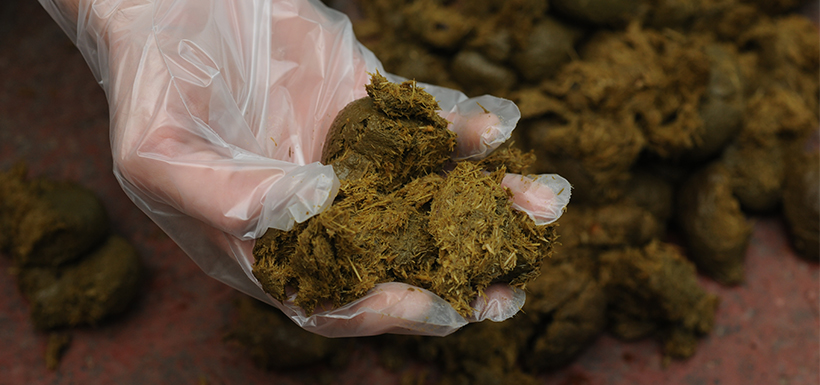

Resistance of endoparasites to de-wormers
The definition of resistance is the ability of parasites to survive a treatment which is generally effective against a species and a stage of that species of parasite. Nowadays, resistance of parasites to de-wormers is considered to be a major issue in equine medecine. Therefore, de-wormers should be prescribed in a well-reasoned way so as to maintain their effectiveness, i.e to prevent the development of resistances. Resistance should not be considered on an individual basis, but on the basis of all the horses in a yard, as they share the same premises and pastures.


- What are the mechanisms leading to development of resistances ?
- Assessment of resistances in France
- What practices lead to an outbreak of resistance ?
- How can antithelmintic resistance of a parasite be measured ?
What are the mechanisms leading to development of resistances ?
A parasite becomes resistant when its genetic material is modified. This spontaneous mutation is a natural phenomenum, and is not due to the parasite becoming accustomed to the de-wormer. It concerns a very small number of parasites among milions, but allows the mutant parasites to persist after de-worming, to breed, and to tranmit this resistant gene to the next generation. This genetic mutation allows the parasites to resist a family of antithelmintic molecules which act in the same way. There are also multiple resistances which concern several families of molecule.
Systematic and frequent de-worming therefore leads to eliminating sensitive parasites, and revealing resistant parasites. Thus, it favours the expansion of resistances.

Assessment of resistances in France
In France, the most preoccupying resistances concern three families of de-wormer available on the market.
- Resistance of small strongyles to benzidamoles
A recent study of 30 stud farms in 12 different departments confirmed the presence of resistant small strongyles to benzidamoles in 94 % of the studs tested. In studs where frequent de-worming was applied, resistance was the rule.
- Resistance of small strongyles to Pyrantel
Of the 30 studs tested, resistance to pyrantel was suspected in 6 (20%) studs, and confirmed in 3 (10%).
- Resistance of small strongyles to macrocyclic lactones
Macrocyclic lactones (ivermectin and moxidectin) demonstrate high effectiveness in most of the studs tested. However, in certain countries there has been a decrease of their efficiency.
- Resistance of ascarids to macrocyclic lactones
In France, ivermectin-resistant ascarids have been found in Normandy
| Parasites | ||
| Small strongyles (cyathostomins) | Ascarids | |
| Resistance to benzimidazoles (fenbendazole, mebendazole) | Very high (in 94% of the farms tested) | undocumented |
| Resistance to pyrantel | moderate (in 10 % of the farms tested) | undocumented |
| Resistance to macrocyclic lactones (ivermectin, moxidectin) | rare (isolated cases) | Described in Normandy |
The resistances described above mainly concern 2 parasites : small strongyles and ascarids. They are the most pathogenic in adult horses (small strongyles) and in young horses (ascarids and small strongyles). There are only 3 classes of antithelmintic molecule available on the market for equines, and there are no new molecules being developped at present. Consequently, it is of utmost importance to maintain the efficiency of these available molecules
What practices lead to an outbreak of resistance ?
- Frequent systematic de-worming of all horses in a yard : this induces high selection pressure, without leaving a refuge population, i.e parasites not subjected to de-worming
- Under dosing of the de-wormer : administering an infra-therapeutical dose of antithelmintics will only eliminate the most sensitive parasites.
- Using antithelmintic treatments which are not destined for equines : their efficiency has not been tested on horses. Even in presence of a same molecule, the excipient, or the means of administration may be different, thereby generating the risk of under dosing.
- Frequently introducing new horses on the farm, they could potentially be infested with resistant parasites.
- Fast rotation of different antithelmintic molecules used, this can generate crossover resistances. Note : Not to be confused, antithelmintic molecules (there are only 3 available) and veterinary specialities which are numerous. One particular molecule may be present in several veterinary products.
- Changing fields immediately after de-worming : after treatment, horses shed only resistant parasites and eggs in their droppings. If the horses are then placed on a pasture with a low contamination level, the population of resistant parasites will colonise the pasture, and become dominant. If the horses are kept on the same pasture as prior to de-worming, the number of resistant parasites is diluted with sensitive parasites already on the pasture, and not selected by the de-wormer.
It is therefore of great importance to respect the good practices of a well-reasoned de-worming program to avoid the outbreak of new resistances
How can antithelmintic resistance of a parasite be measured ?
The presence of antithelmintic resistant parasites on a stud can be measured, specifically resistance of small strongyles to benzidamoles and pyrantel, where resistance is the most frequent. To determine whether a molecule is effective against small strongyles in a given yard, a fecal egg shedding reduction test is carried out. Overall resistance in a yard is tested, rather than resistance per individual horse. This is because, unless there is no contact between horses on the premises, they share the same parasites through the environment (fields, paddocks, stables…..). If there is a resistance it concerns all the horses in the yard.
To carry out this measurement, two FECs need to be performed (one before de-worming, and one after treatment)
- First FEC carried out betwen day -1 and day -7
This first FEC gives a picture of the initial number of eggs shed, and enables to test only those horses with a high enough level of eggs shed so as to quantify the reduction after treatment.
It should be carried out on a minimum of 12 horses (so as to get a significant result) by targeting potentially high shedders (e.g young horses between 2 and 5 years old who have a lower immunity, and are therefore often more infested than adult horses).
- De-worming - day 0
High and moderate shedding horses (i.e with an egg count of over 200 Epg) are de-wormed with the molecule to be tested.
- Second FEC- Day 14
This second FEC is only performed for horses ranked high or moderate shedders in the first FEC, and for whom a treatment was implemented on day 0.
Thanks to a calculation comparing the egg count of the first FEC between day-1 and day-7, and the second FEC on Day 14, the efficacy of the molecule on the specific farm can be measured :
% efficacy = 100 x [ epg (FEC 1) – epg (FEC 2) ] / opg (FEC 1)
- Efficacy percentage
Below an efficacy percentage of 90 %, it is thought that there is a resistance of small strongyles to the molecule tested. Interpretation of the results remains delicate. The treating veterinarian will then decide, in accordance with the results on the given stud, whether to continue using the molecule or not.
Any resistance is irreversible, once detected and confirmed on a stud, the molecule will not become effective again, even when not used for a period of time.
Note : This measurement can be carried out for a single horse, but will not confirm the presence of resistant parasites in the herd. A resistance test can also be useful in foals : to measure the resistance of ascarids to ivermectin, and of small strongyles to pyrantel and benzimidoles.
When a new horse arrives in the yard, the test allows to determine the efficacy of the molecule used after treatment, and avoid resistant parasites coming into the stud through the new horse.

Know more about our authors
- Guillaume SALLÉ INRA - Unité Mixte de Recherche (UMR) 1282 - Infectiologie et Santé Publique - Nouzilly (37)
- Translated from french by : Karen DUFFY Translator
- Marie DELERUE Veterinarian - development engineer IFCE
Bibliography
- BOURDOISEAU G., 2015. La résistance aux anthelmintiques chez les équidés. Le Nouveau Praticien vétérinaire équine, vol. 11, pages 6-10.
- GEURDEN T., BETSCH J.M., MAILLARD K.et coll., 2013. Determination of anthelmintic efficacy against equine cyathostomins and Parascaris equorum in France. Equine Veterinary Education, vol. 25, pages 304-307.
- LAUGIER C., 2015. Etat des lieux de la résistance aux anthelmintiques chez les nématodes des équidés. Le Nouveau Praticien vétérinaire équine, vol. 11, pages 11-17.
- LAUGIER C., SEVIN C., MENARD S.et coll., 2015. Prevalence of Parascaris equorum infection in foals on French stud farms and first report of ivermectin-resistant P. equorum populations in France. Veterinary Parasitology, vol. 188, pages 185-189.
- NIELSEN M.K., MITTEL L., GRICE A., ERSKINE M., GRAVES E., VAALA W., TULLY R.C., FRENCH D.D., BOWMAN R. et KAPLAN R.M., 2013. AAEP, Parasite Control Guidelines.
- SALLE G. et LAUGIER C., 2015. La détection de la résistance aux anthelmintiques chez les nématodes parasites des équidés. Le Nouveau Praticien vétérinaire équine, vol. 11, pages 18-22.
- TRAVERSA D., CASTAGNA G., VON SAMSON-HIMMELSTJERNA G. et coll., 2012. Efficacy of major anthelmintics against horse cyathostomins in France. Veterinary Parasitology, vol. 188, pages 294-300.












